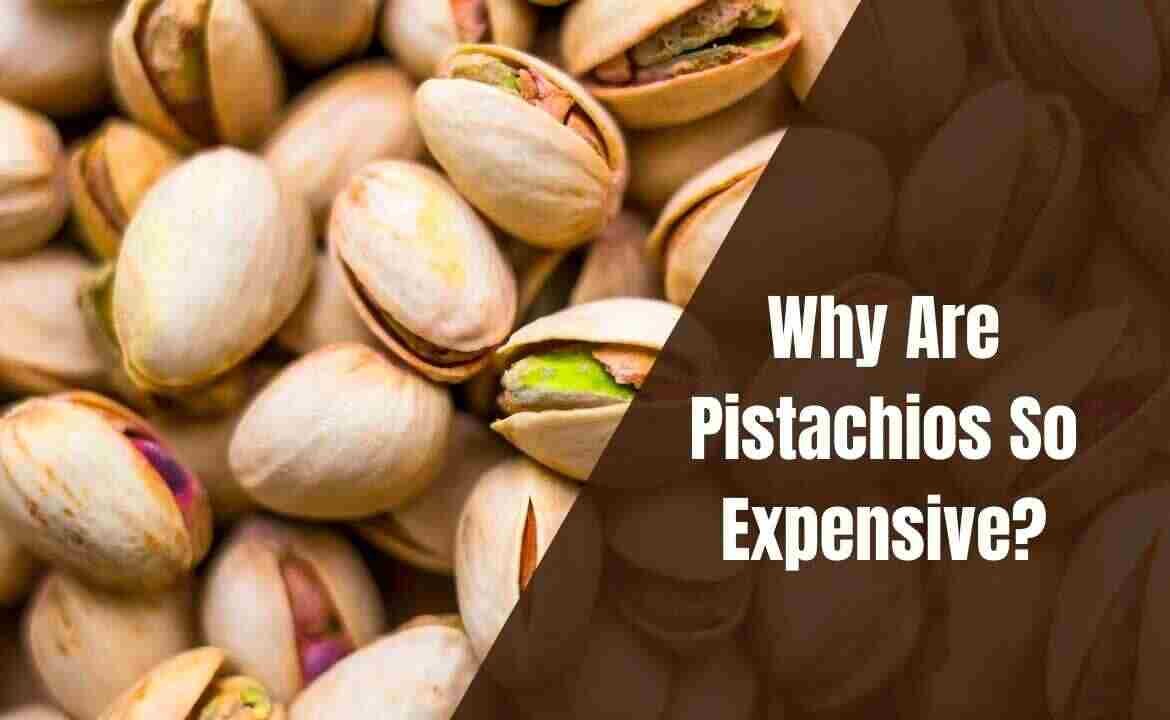Pistachios have become one of the most popular nuts around the world. However, many people wonder why are pistachios so expensive compared to other nuts like almonds or peanuts. From high production costs to limited growing regions, several factors contribute to their high price. Let’s explore the reasons behind their hefty cost.
Climate and Growing Conditions
One of the main reasons pistachios are so costly is because they require very specific climate conditions. Pistachio trees thrive in regions with hot summers and cold winters. These strict requirements limit the number of places where pistachios can be grown successfully. Countries like the United States (especially California), Iran, and Turkey dominate global pistachio production.
The trees also take several years to mature. A pistachio tree may not start producing nuts until it’s about seven to ten years old.
This long wait means farmers invest a lot of time, water, and resources before they can earn a return. Once the trees start producing, their yield may still fluctuate due to weather patterns or droughts.
Because of these risks and the long growth cycle, the cost of pistachio farming is high from the start. That expense is eventually passed on to the consumer.
Labor-Intensive Harvesting Process
Another factor in pistachio pricing is the harvesting process. While many crops are harvested by machines, pistachios often require more careful handling. Farmers must pick them at just the right time. If picked too early or too late, the nuts can lose flavor or spoil.
After harvesting, pistachios go through a process of hulling, drying, and sorting. The nuts must be dried quickly to prevent mold. Then they are sorted based on size and quality. These multiple steps add labor costs to the production process.
In addition, most pistachios sold on the market are roasted and salted. That further increases the cost due to additional processing and packaging. Each extra step in the supply chain raises the final retail price.
Water Usage and Environmental Factors
Water scarcity is another reason why pistachios carry a premium price. Growing pistachio trees requires significant water, especially during the dry season.
In areas like California, where water shortages are common, farmers must often pay high prices to access water. That cost is reflected in the price of the final product.
In regions facing environmental regulations or drought restrictions, pistachio farming becomes even more challenging. These environmental concerns can reduce supply, causing prices to rise even further.
Additionally, climate change is playing a role. With shifting weather patterns and more extreme conditions, maintaining healthy crops becomes harder. All these environmental pressures contribute to the increasing cost of pistachios over time.
Limited Supply and Growing Demand
While demand for pistachios is rising globally, the supply remains relatively limited. These nuts are rich in protein, healthy fats, and antioxidants, making them a favorite among health-conscious consumers. They are also used in a variety of foods—ice creams, baked goods, and savory dishes.
However, because of the long growth cycle and geographic limitations, increasing pistachio production is not easy.
Farmers can’t quickly expand their orchards like they can with some other crops. It takes years to grow new trees and even longer to see them bear fruit.
With demand outpacing supply, prices remain high. Export restrictions or political issues in pistachio-producing countries can also lead to temporary shortages, pushing prices up further.
Transportation and Export Costs
Pistachios are often grown in limited regions but consumed globally. That means they must be shipped long distances to reach international markets.
Whether exported from the U.S. to Europe or from Iran to Asia, the cost of transportation is significant.
Shipping costs have also increased in recent years due to fuel price hikes and global supply chain disruptions. On top of that, customs duties, tariffs, and taxes on imported agricultural products can add to the price tag in many countries.
When all these shipping and handling expenses are added up, it becomes clearer why pistachios are more expensive on store shelves than other types of nuts.
Pests, Diseases, and Crop Risks
Pistachio trees are vulnerable to pests and diseases that can wipe out entire harvests. Common threats include insects, fungal infections, and tree blight.
Farmers must invest in pest management, fertilizers, and disease control, which adds more to the cost of farming.
Crop insurance, equipment maintenance, and unpredictable yields further drive up the risks for pistachio growers.
If a harvest is poor due to pests or weather damage, prices may spike as a result of reduced availability.
These agricultural risks are part of why pistachios are viewed as a premium crop. Maintaining tree health and nut quality year after year isn’t easy, and that challenge is reflected in the price.
Quality Control and Packaging
Not all pistachios are created equal. The highest quality nuts undergo strict inspection processes to ensure freshness, taste, and appearance.
Grading and sorting by size, color, and shell opening determine which nuts make it to premium packages.
In addition, pistachios are often sold in resealable bags or containers that preserve freshness and extend shelf life. These packaging materials and branding efforts increase production costs, especially for organic or gourmet lines.
High-quality packaging also plays a role in product perception. Many consumers are willing to pay more for premium, fresh-looking nuts in well-sealed containers.
The Bottom Line
So, why are pistachios so expensive? The answer lies in a combination of limited growing regions, long maturation periods, high water and labor costs, environmental risks, global demand, and shipping expenses. From farm to shelf, every step in the pistachio’s journey adds value, and cost.
Despite the price, pistachios continue to be in high demand thanks to their taste, versatility, and health benefits. For many, pistachios’ nutritional value and unique flavor justify the extra cost. Whether you’re snacking on them or using them in recipes, you’re enjoying one of the world’s most carefully cultivated nut

